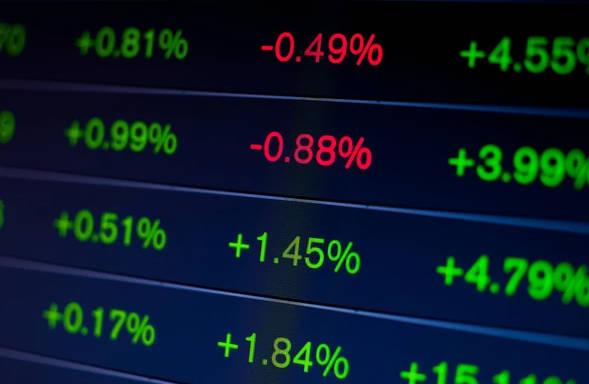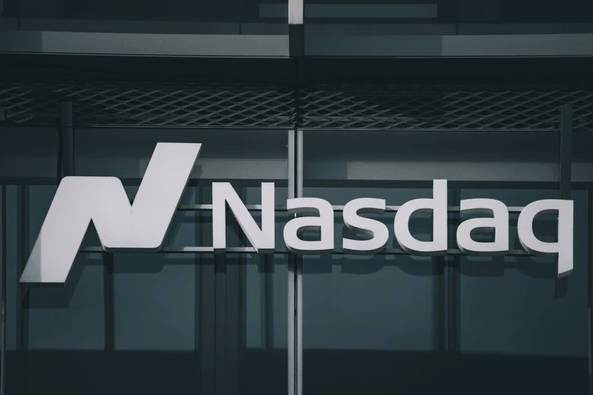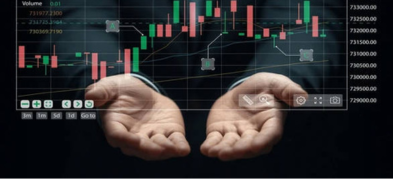
Ultima Markets App
Trade Anytime, Anywhere
Important Information
This website is managed by Ultima Markets’ international entities, and it’s important to emphasise that they are not subject to regulation by the FCA in the UK. Therefore, you must understand that you will not have the FCA’s protection when investing through this website – for example:
- You will not be guaranteed Negative Balance Protection
- You will not be protected by FCA’s leverage restrictions
- You will not have the right to settle disputes via the Financial Ombudsman Service (FOS)
- You will not be protected by Financial Services Compensation Scheme (FSCS)
- Any monies deposited will not be afforded the protection required under the FCA Client Assets Sourcebook. The level of protection for your funds will be determined by the regulations of the relevant local regulator.
Note: Ultima Markets is currently developing a dedicated website for UK clients and expects to onboard UK clients under FCA regulations in 2026.
If you would like to proceed and visit this website, you acknowledge and confirm the following:
- 1.The website is owned by Ultima Markets’ international entities and not by Ultima Markets UK Ltd, which is regulated by the FCA.
- 2.Ultima Markets Limited, or any of the Ultima Markets international entities, are neither based in the UK nor licensed by the FCA.
- 3.You are accessing the website at your own initiative and have not been solicited by Ultima Markets Limited in any way.
- 4.Investing through this website does not grant you the protections provided by the FCA.
- 5.Should you choose to invest through this website or with any of the international Ultima Markets entities, you will be subject to the rules and regulations of the relevant international regulatory authorities, not the FCA.
Ultima Markets wants to make it clear that we are duly licensed and authorised to offer the services and financial derivative products listed on our website. Individuals accessing this website and registering a trading account do so entirely of their own volition and without prior solicitation.
By confirming your decision to proceed with entering the website, you hereby affirm that this decision was solely initiated by you, and no solicitation has been made by any Ultima Markets entity.
I confirm my intention to proceed and enter this website Please direct me to the website operated by Ultima Markets , regulated by the FCA in the United KingdomNasdaq 100 Explained: All You Need to Know
The Nasdaq 100 is one of the most closely watched stock indexes in the world. It tracks 100 of the largest non-financial companies listed on the Nasdaq exchange, representing sectors like technology, consumer services, healthcare, and communication.
Unlike broader benchmarks such as the S&P 500, the Nasdaq 100 excludes banks and insurance firms. That makes it heavily tilted toward growth and innovation, where tech giants like Apple, Microsoft, Amazon, Nvidia, and Alphabet dominate the weightings.
In 2025, the index remains the heartbeat of the global growth trade. A mirror of market confidence in AI, semiconductors, and digital transformation.
A Short History
The Nasdaq launched the Nasdaq-100 on January 31, 1985 to spotlight the largest non-financial companies on its market. Over four decades the index evolved into a global large-cap growth benchmark with a sizeable product ecosystem built around it.

Why the Nasdaq 100 Matters
The Nasdaq 100 is often viewed as a barometer for global risk sentiment. When it rallies, investors tend to embrace risk. When it sells off, caution returns.
Here’s why it matters:
- Its tech-heavy composition captures the world’s leading innovators.
- Its earnings reports often set the tone for broader markets.
- Its valuation sensitivity to interest rates makes it a key gauge for Fed policy expectations.
As of October 2025, the Nasdaq 100 is up roughly 19.5% year-to-date, reflecting strong performance from semiconductor and AI-related companies. It reached a record closing high of 22,190.52 on June 24, 2025, underlining the resilience of growth leaders.
How the Nasdaq 100 Is Built
The index follows a modified market-capitalisation weighting method. That means larger companies carry more influence, but caps are placed to prevent any single stock from dominating.
Key facts:
- Eligibility: Must be Nasdaq-listed and non-financial.
- Rebalancing: Reviewed quarterly to reflect current market capitalisation.
- Weight cap: No company can exceed 14% of the index at a rebalance.
This structure ensures the Nasdaq 100 evolves with market leadership — adding rising stars and trimming laggards over time.
What Moves the Nasdaq 100
Several forces drive daily and long-term moves in the Nasdaq 100:

1. Corporate Earnings
Earnings from top constituents like Nvidia, Microsoft, and Amazon can swing the entire index. A strong earnings season typically lifts sentiment across global equities.
2. Interest Rates
Tech valuations depend heavily on discount rates. Falling yields generally boost growth stocks, while rising rates can pressure them.
3. Innovation Trends
Breakthroughs in AI, chips, cloud, and software often trigger sector-wide rallies. In 2025, the AI boom has been a dominant driver.
4. US Dollar and Global Demand
A stronger dollar can weigh on overseas earnings of multinational Nasdaq firms, while global tech spending boosts their outlook.
Nasdaq 100 vs Other Indexes
Before diving deeper into trading strategies, let’s compare how the Nasdaq 100 stacks up against other major U.S. benchmarks. Understanding these differences helps investors see where each index fits, from the tech-heavy Nasdaq 100 to the broader, more diversified S&P 500 and Nasdaq Composite.
| Feature | Nasdaq 100 | S&P 500 | Nasdaq Composite |
| Coverage | 100 large non-financial Nasdaq stocks | 500 large U.S. stocks | 3,000+ Nasdaq-listed companies |
| Sector Bias | Tech & Growth | Broad Economy | Broad but tech-heavy |
| Financials Included | No | Yes | Yes |
| Volatility | Higher | Moderate | Higher |
The Nasdaq 100 delivers focused exposure to innovation leaders, while the S&P 500 offers a broader economic mix.
How to Trade or Invest in the Nasdaq 100
There are multiple ways to gain exposure depending on your capital size, strategy, and risk appetite.

1. ETFs (For Investors)
- Invesco QQQ (QQQ) – The most popular Nasdaq 100 ETF, known for deep liquidity and tight spreads. Expense ratio: 0.20%.
- Invesco QQQM (QQQM) – Same index, designed for longer holding with a 0.15% total expense ratio.
QQQ is prized for deep liquidity. QQQM offers the same exposure at a lower ongoing fee for buy-and-hold use.
2. Futures (For Active Traders)
- E-mini Nasdaq 100 (NQ) – $20 per index point; minimum tick 0.25 index point. Near 24-hour access.
- Micro E-mini Nasdaq 100 (MNQ) – $2 per index point; great for smaller accounts. Minimum tick 0.25 index point. Smaller notional for fine-tuned risk.
These contracts allow precise exposure and hedging against short-term volatility.
Rule of thumb: A 1-point move equals $20 on NQ and $2 on MNQ.
3. Options (For Defined-Risk Strategies)
NDX index options and XND micro index options are cash-settled and European-style. XND is 1/100th of NDX, helpful when you want smaller notional exposure. Options on QQQ are also widely used for ETF-based strategies because it lets you structure directional, hedging, or income trades.
- NDX options: Cash-settled, suitable for institutions.
- XND options: Mini versions designed for retail traders.
Common Trading Approaches
| Strategy | Idea | Typical Tool |
| Trend Following | Ride sustained uptrends; use pullbacks to add | QQQ / Futures |
| Breakout Plays | Trade confirmed range breaks | Futures / Options |
| Pairs or Hedges | Long Nasdaq 100, short S&P 500 (growth vs value) | Futures |
| Earnings Season Positioning | Use options spreads to limit risk around key results | NDX / QQQ options |
Each approach should include stop-loss discipline and clear position sizing.
Key Risks to Watch
- Concentration Risk – Top 10 names account for over half of index weight.
- Valuation Risk – Rich multiples can compress sharply if growth slows or yields rise.
- Liquidity & Gap Risk – Volatile news cycles can cause sharp overnight swings in futures.
Balancing exposure with diversification and disciplined risk management remains essential.
2025 Quick Nasdaq 100 Snapshot
| Metric | Details |
| Companies | 100 (non-financial) |
| Sector Weight | ~60% Tech, ~20% Consumer, rest in Health & Comm. |
| Record Close | 22,190.52 (24 Jun 2025) |
| YTD Performance | +19.5% (as of Oct 2025) |
| Main Drivers | AI, semiconductors, rate policy |
| Review Cycle | Quarterly, with annual security-level caps each December |
Final Thoughts
The Nasdaq 100 isn’t just a tech index. It is a reflection of how innovation and monetary policy shape modern markets. Its heavyweights lead global growth trends, but also carry volatility that rewards disciplined, informed trading.
Whether you access it through ETFs, futures, or options, the key is understanding what drives its moves, and using risk control to stay on the right side of momentum.
Disclaimer: This content is provided for informational purposes only and does not constitute, and should not be construed as, financial, investment, or other professional advice. No statement or opinion contained here in should be considered a recommendation by Ultima Markets or the author regarding any specific investment product, strategy, or transaction. Readers are advised not to rely solely on this material when making investment decisions and should seek independent advice where appropriate.












